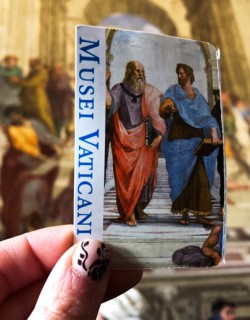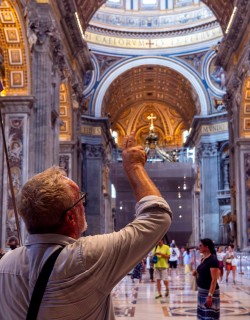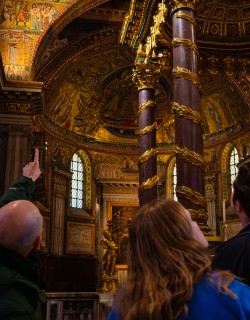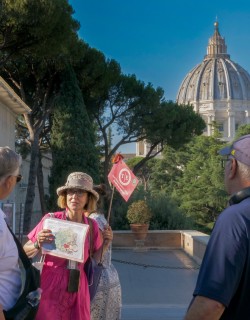Few works of art are as instantly recognisable - or as mythologized - as the ceiling of the Sistine Chapel. Painted by Michelangelo over four gruelling years between 1508 and 1512, it stands as a monument not just to the brilliance of the Renaissance, but to the outer limits of human effort and ingenuity. Goethe once said that “without having seen the Sistine Chapel, one can form no appreciable idea of what one man is capable of achieving.” But what exactly was involved in that achievement? And how much of what we think we know about Michelangelo and his ceiling is actually true?
Behind the beauty lies a story of painstaking labour, technical brilliance, and more than a few enduring myths. How did Michelangelo, a sculptor by trade and a reluctant painter, end up transforming the ceiling of the pope’s private chapel into the world’s foremost temple of art?
Read on to uncover with us the processes and techniques that made possible one of the greatest artistic feats in history!
The Medium: Fresco

Michelangelo painted the entirety of the Sistine Chapel ceiling in the medium of fresco. One of the most popular methods of painting during the Renaissance, fresco means fresh in Italian, and involves painting directly onto an area of freshly laid and still-wet lime-based plaster. The wet plaster chemically bonds with the pigment as it dries to form an impermeable and highly resilient image far more resistant to the ravages of time and environment than other methods of paint-based decoration. It also made it possible to cover enormous expanses of wall and ceiling such as the surfaces of the Sistine Chapel entirely with images.
Although very effective, painting in fresco was time-consuming and demanding. To make things even more difficult for Michelangelo, the surface of the Sistine Chapel ceiling was already covered in fresco, a lovely depiction of the starry night sky painted by Piermatteo d’Amelia during the first round of Sistine Chapel decorations in the 1480s. As a result of the unique chemical properties of fresco, this could not simply be painted over; instead, Michelangelo and his team were forced to manually chip away at Piermatteo’s fresco, sending fragments of plaster and clouds of dust spiralling into the vast space of the chapel before work on the new scheme could begin.
When Piermatteo’s vault fresco was finally hacked off, the ceiling could be prepared for the new decorations. Firstly, a thick layer of rough plaster, called arriccio, was applied to the wall surface. This had to be allowed to dry completely for some weeks, or even months depending on the atmospheric conditions, before a layer of much finer plaster known as the intonaco was layered over the top at the beginning of each new work day. The fresh plaster was wiped with a cloth to remove any trowel marks and give the surface some texture onto which the paint would adhere.
Michelangelo then had to work quickly over the course of the day to cover the wet intonaco plaster with his images – if the plaster became too dry, the pigment would not sink in. Each day’s section of wet plaster is known as a giornata, or day in Italian, and if you look closely you can still see where one day’s work ended and the next began by looking at the barely visible joins in the plaster.
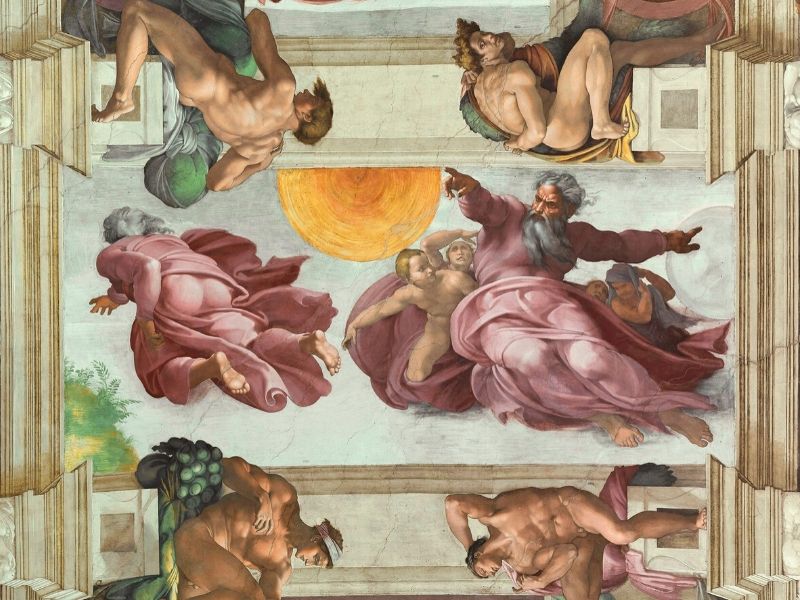
As you can see, painting in fresco was a complex and specialised business, and at this point in his career Michelangelo was not an experienced painter. The great man was by training a sculptor, and only reluctantly took on the task of decorating the Sistine Chapel when left no other option by Pope Julius II, for whom the artist had originally been engaged to sculpt his funerary monument.
Michelangelo’s protestations to the pontiff about his re-assignment fell on deaf ears, and so he had no choice but to rapidly learn the subtleties of his new medium. Unsurprisingly, his initial steps were somewhat faltering – not getting the proportions of ingredients exactly right in the wet plaster mix, his first experiments in fresco quickly moulded.
A despairing Michelangelo blamed the local stone used to make the lime for the plaster, and demanded once more to be relieved of the commission. But the advice of a local expert sent by the pope to investigate the problem led him to adjust his mixture, and the rest is history. As he progressed in the project he became much quicker and more adept at the technique - thanks to the visible lines dividing each giornata we know how much work Michelangelo got through each day, and at the end of the project he was so adept that he incredibly painted the final image, God’s Separation of Light from Darkness, in a single day’s work.
The Design: Cartoons
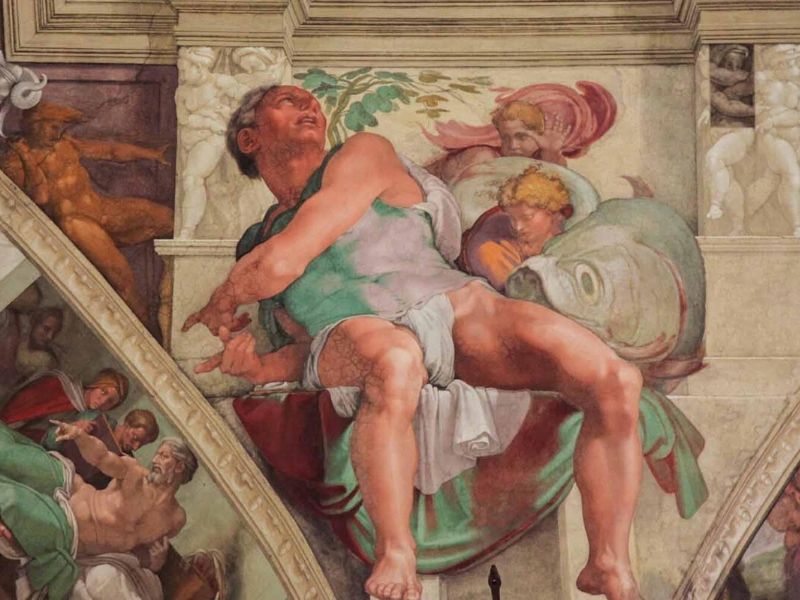
E
lsewhere we have examined in detail the subject matter and composition of the Sistine Chapel frescoes, which were worked out in detail in advance. But how did Michelangelo transfer his designs from preparatory sketches onto the actual surface of the wall itself? Traditionally there were two principal methods of transferring drawings made on paper in the studio (known as cartoons) to the surfaces of walls and ceilings to be frescoed.
The first, called pouncing, entailed making a full-size drawing before pricking the outlines of the design with a series of pinholes. The drawing was then set against the surface to be painted and charcoal dust would be forced through the pinpricks, transferring the outlines onto the wall. The second method, known as incision, involved holding the cartoon against the intonaco and using a sharp stylus to trace the outlines, imprinting them into the plaster beneath.
Although pouncing was a much more time-consuming technique, this was the method preferred by Michelangelo in the Sistine Chapel. Fascinatingly, as work progressed and Michelangelo became more skilled at working in fresco, he made the decision to abandon his reliance on cartoons, working freehand directly on the intonaco. This was a bold move as mistakes were difficult if not impossible to rectify, but it facilitated the immense speeding up of the project.
The Method: Scaffolding
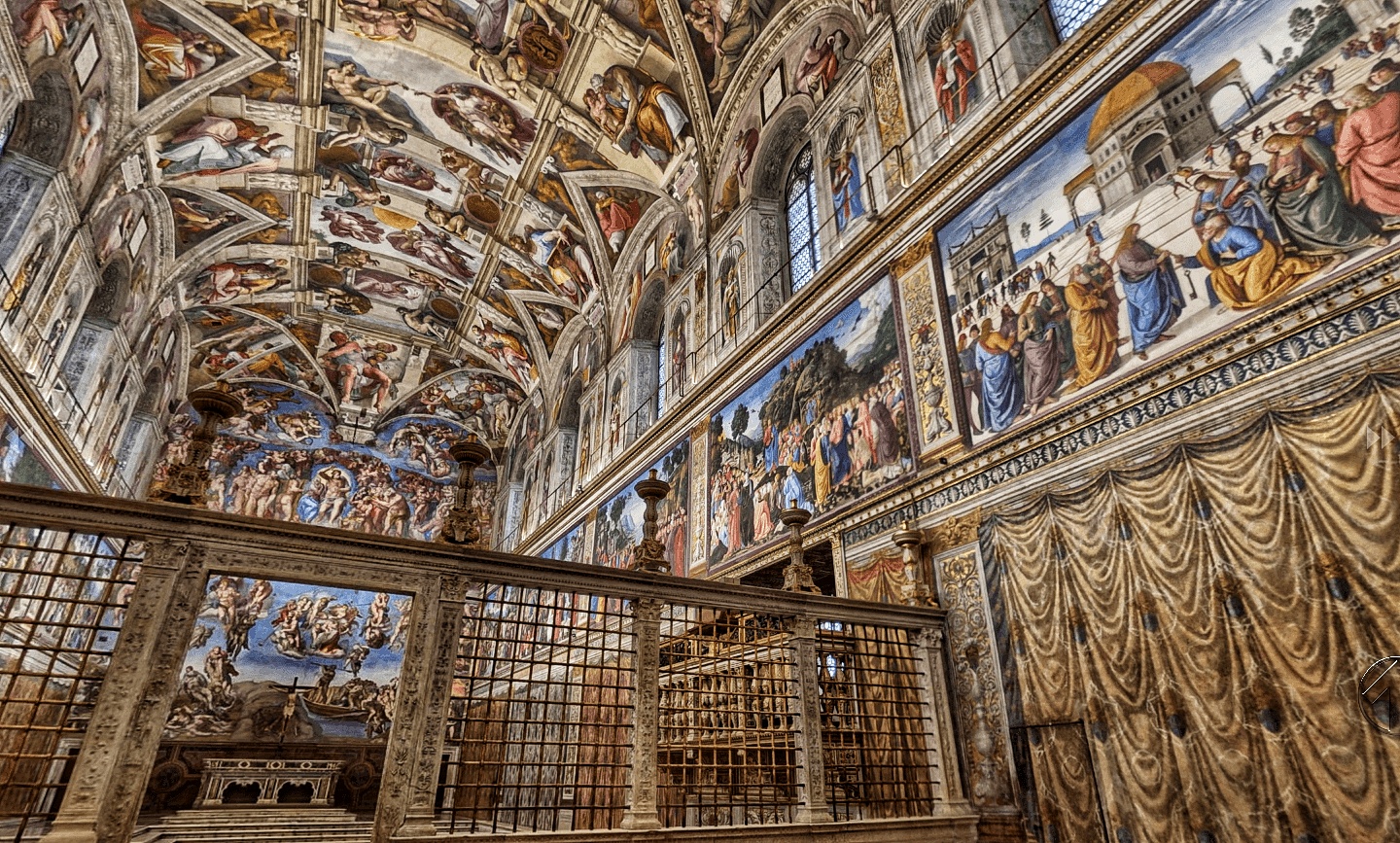
One problem remains for us to uncover: the Sistine Chapel ceiling soars over 60 feet into the air, and it would be no mean feat to physically get up there to do the actual painting. What was more, a conventional fixed scaffold was a non-starter as it would have obstructed the chapel’s aisles, and masses and ceremonies had to continue to be observed even while Michelangelo’s work was ongoing. And so Michelangelo and his colleague Piero Rosselli devised an ingenious system of mobile scaffolding to reach the distant ceiling, projecting from bracketed supports high up in the wall - thus leaving the floor free.
Don’t listen to anyone who tells you that Michelangelo painted lying on his back, as immortalised in the schlocky Hollywood tale The Agony and the Ecstasy, where a scene-chewing Charlton Heston takes on the role of the thundering artist – in fact he painted from a standing position, stretching his brush high over his head to reach the wet plaster above.
Nonetheless, it must have been incredibly claustrophobic to be wedged in the tiny space between scaffolding and ceiling vault, craning his head upwards for more than 12 hours each day as he painted at an extreme angle that could have given him little idea of exactly how the work was progressing. The physical strain Michelangelo was forced to endure for so many hours each day caused him health-problems for years to come.
Michelangelo even wrote a poem lamenting the constant discomfort the work caused him, vividly describing how his ‘beard was turned to heaven,’ his ‘belly touched his chin,’ his brain was ‘crushed in a casket’ and his neck grew a goiter whilst streams of paint rained down endlessly on his face. The plaintive conclusion to his poem remains hard to believe for anyone who has seen what Michelangelo achieved in the Sistine Chapel: ‘My painting is dead...I am not in the right place – I am not a painter.’
If only we could all paint as poorly as Michelangelo!
The Personnel: Going it Alone?
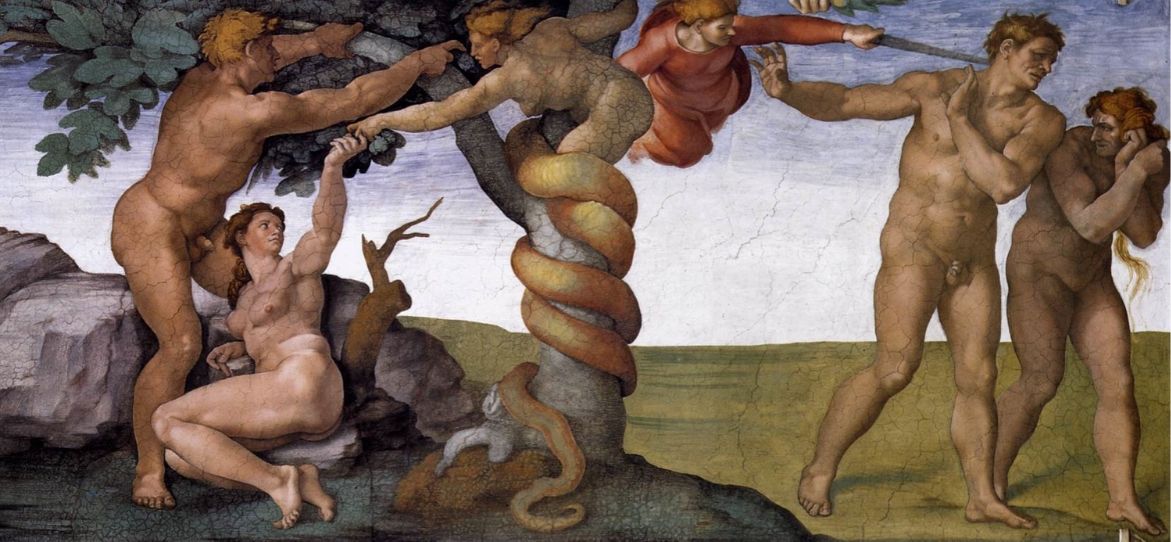
As we have seen, the old tale that Michelangelo painted the entire vault by himself is not quite true; he did have help from assistants, and not just to assist in menial tasks such as mixing the plaster, grinding the pigments, moving the scaffolding and aligning the cartoons. Some less important aspects of the painting were delegated too – minor angels fluttering around the fringes of the main images for example, as well as oak leaves and other ornamental details. We even know the names of four assistants that arrived from Michelangelo’s native Florence in 1508: Bastiano da Sangallo, Giuliano Bugiardini, Agnolo di Donnino and Jacopo del Tedesco. They were relatively poorly paid, however, and it seems unlikely that they were entrusted with any significant tasks in the project.
But even if the legendary story of nobody handing Michelangelo so much as a proverbial nail during his titanic task isn’t literally true, there is more than a kernel of truth to it – Michelangelo never had collaborators or assistants who took on much of the task of painting as in the workshops of most of his contemporaries, and he was notoriously unwilling to delegate. For the great majority of the labour Michelangelo ploughed a lonely furrow, driven solely by an incredible commitment to leaving a permanent stamp on the history of art.

We hope you enjoyed our primer on how Michelangelo painted the Sistine Chapel ceiling! Through Eternity Tours offer small group tours and private itineraries that visit the Sistine Chapel and Vatican Museums, led by leading local art historians. To find out more and book your experience, check out our range of Vatican tours here.
CHECK OUT THE REST OF OUR SISTINE CHAPEL SERIES HERE:
- Michelangelo and the Warrior Pope Julius II
- A Guide to Michelangelo's Sistine Chapel Ceiling
- The Wonders of the Early Renaissance in the Sistine Chapel
- Michelangelo’s Last Judgement in the Sistine Chapel
- How did Michelangelo Paint the Sistine Chapel Ceiling?
- 5 Things You Might Not Know About the Sistine Chapel
- How to Visit the Vatican Museums and Sistine Chapel in 2025
- A History of Conclave: The Most Fascinating Papal Elections Ever


